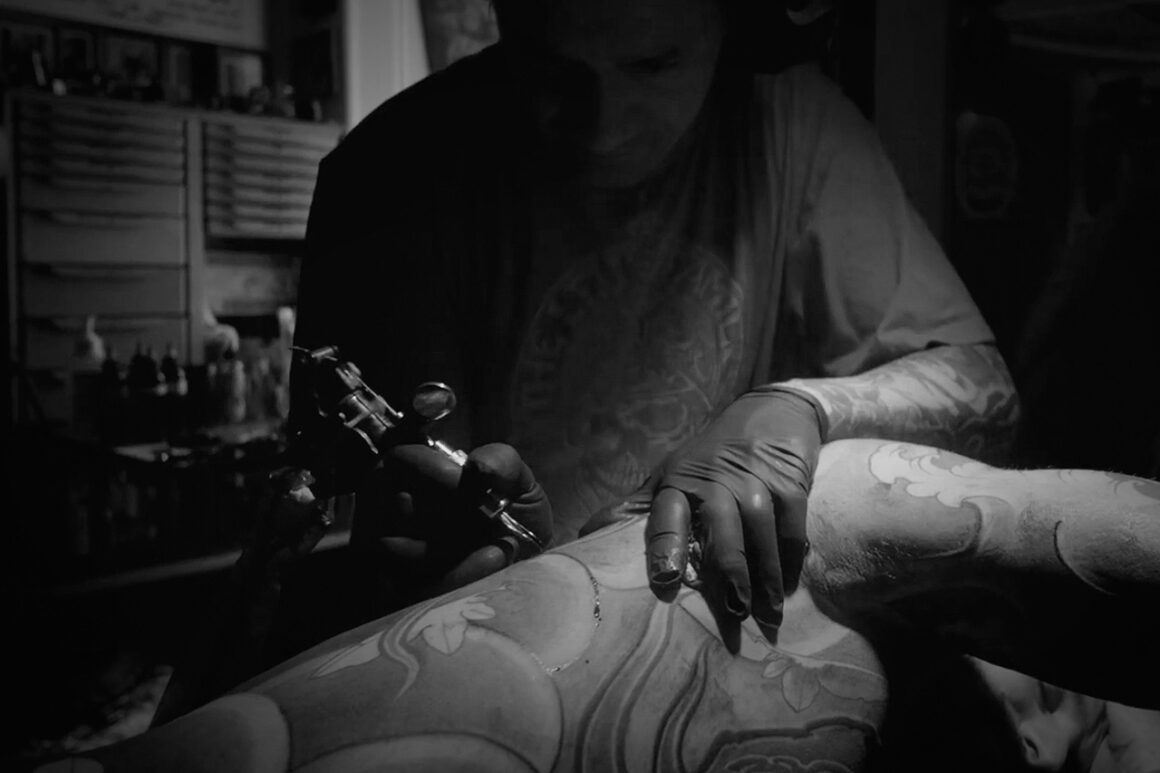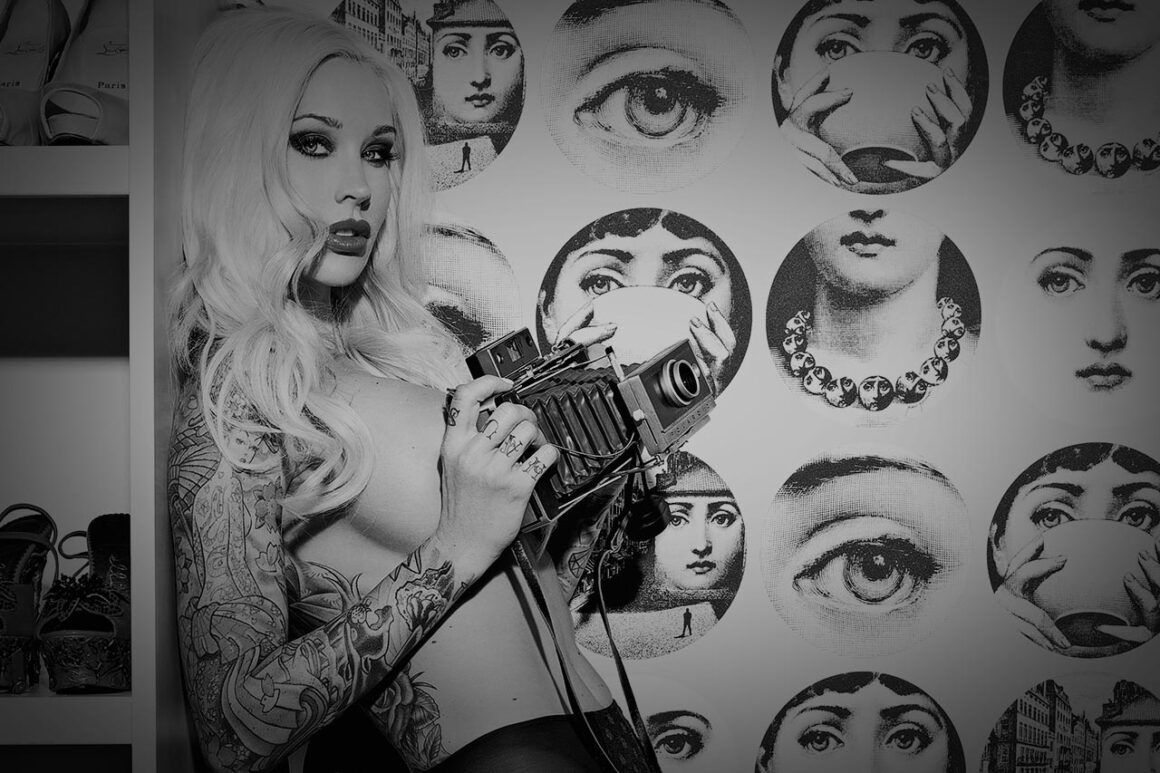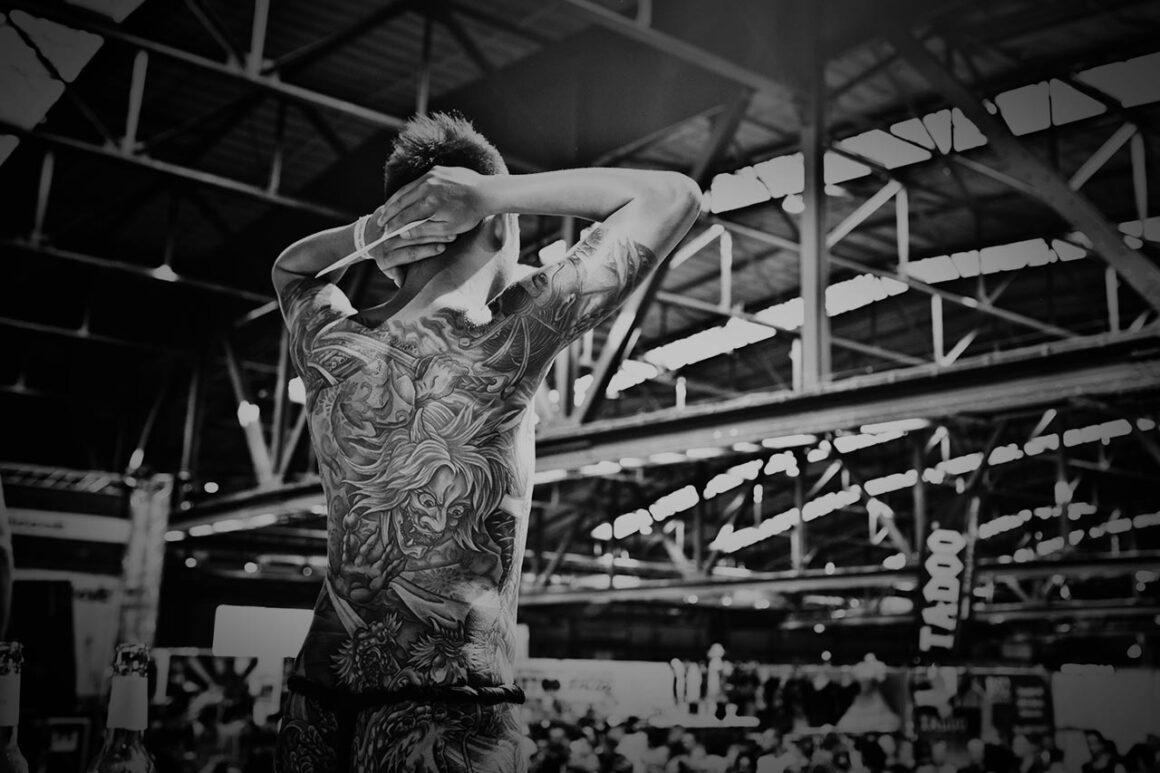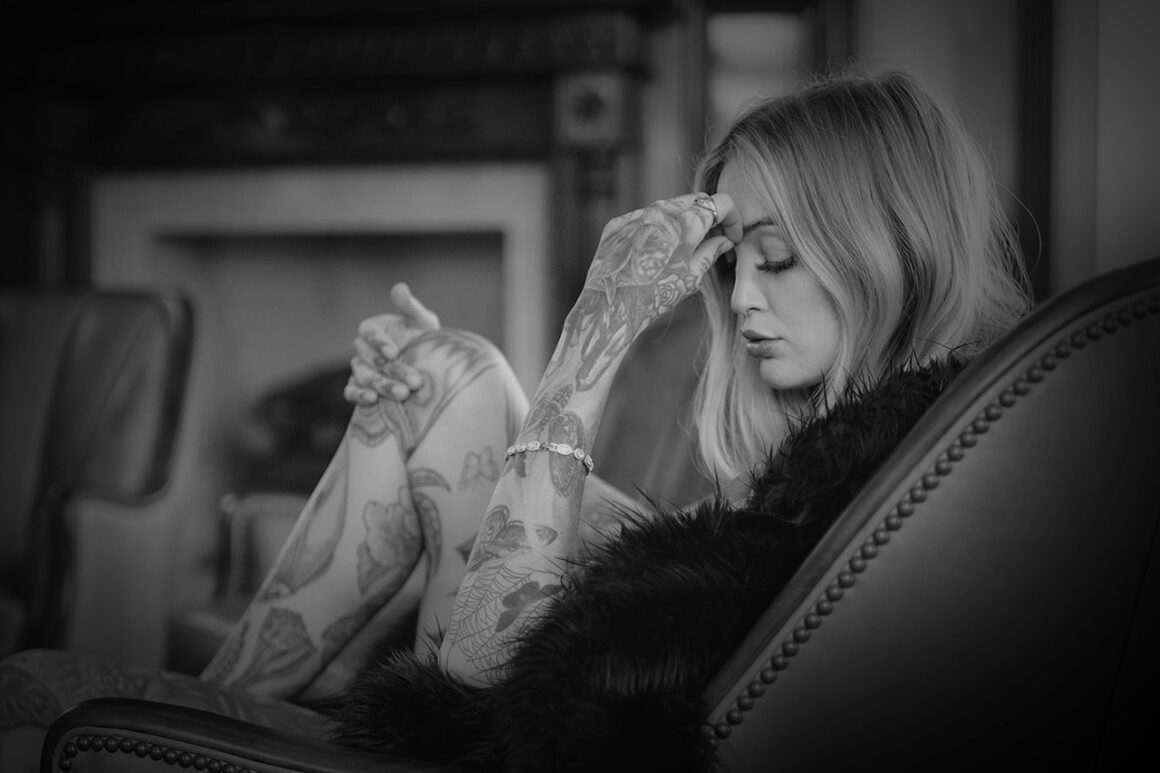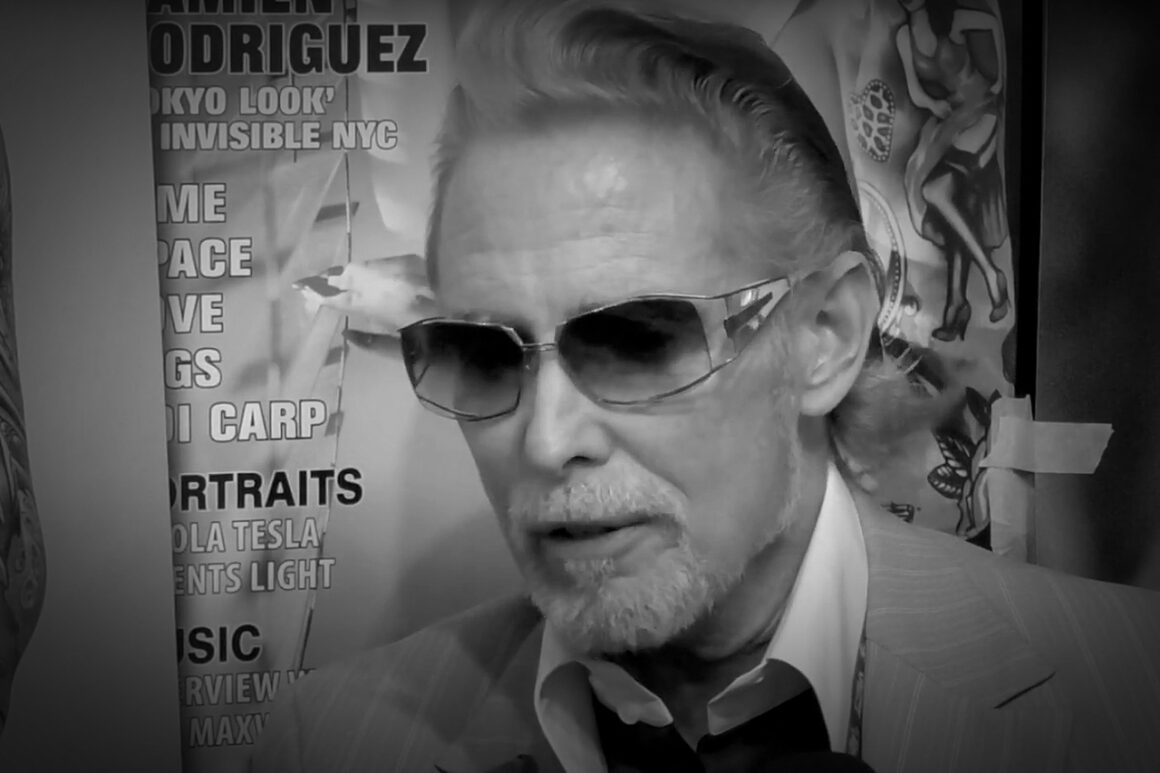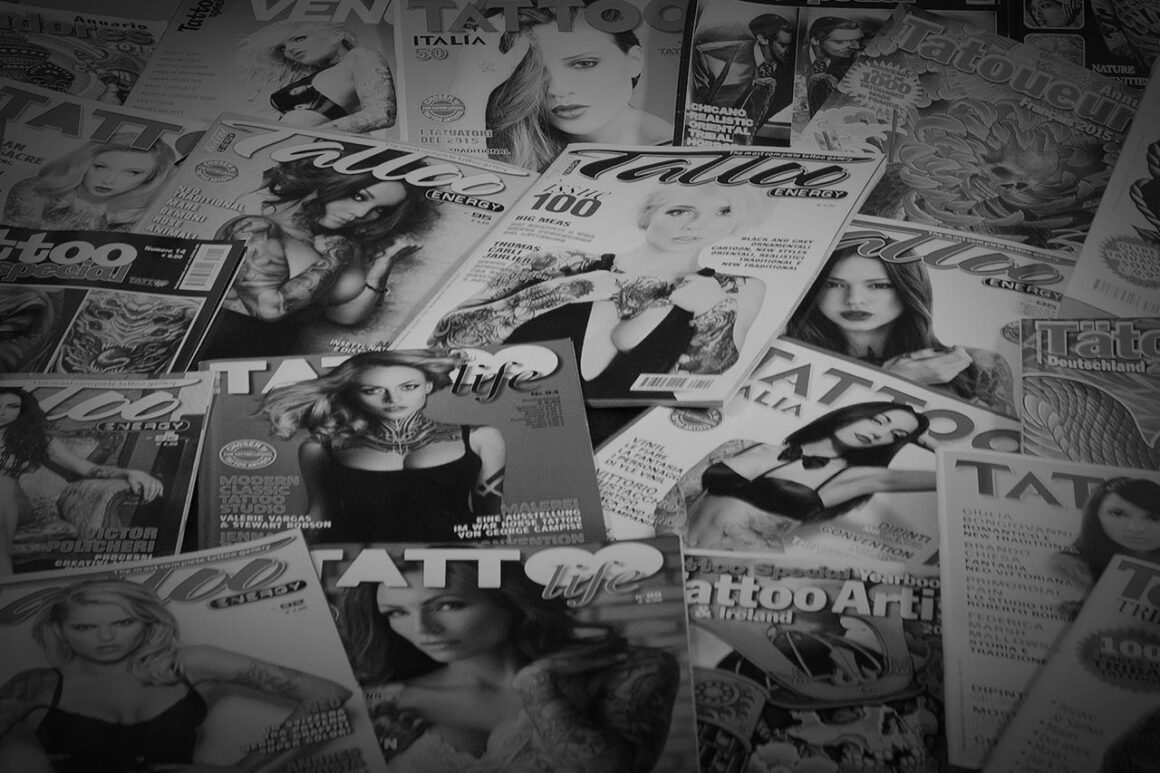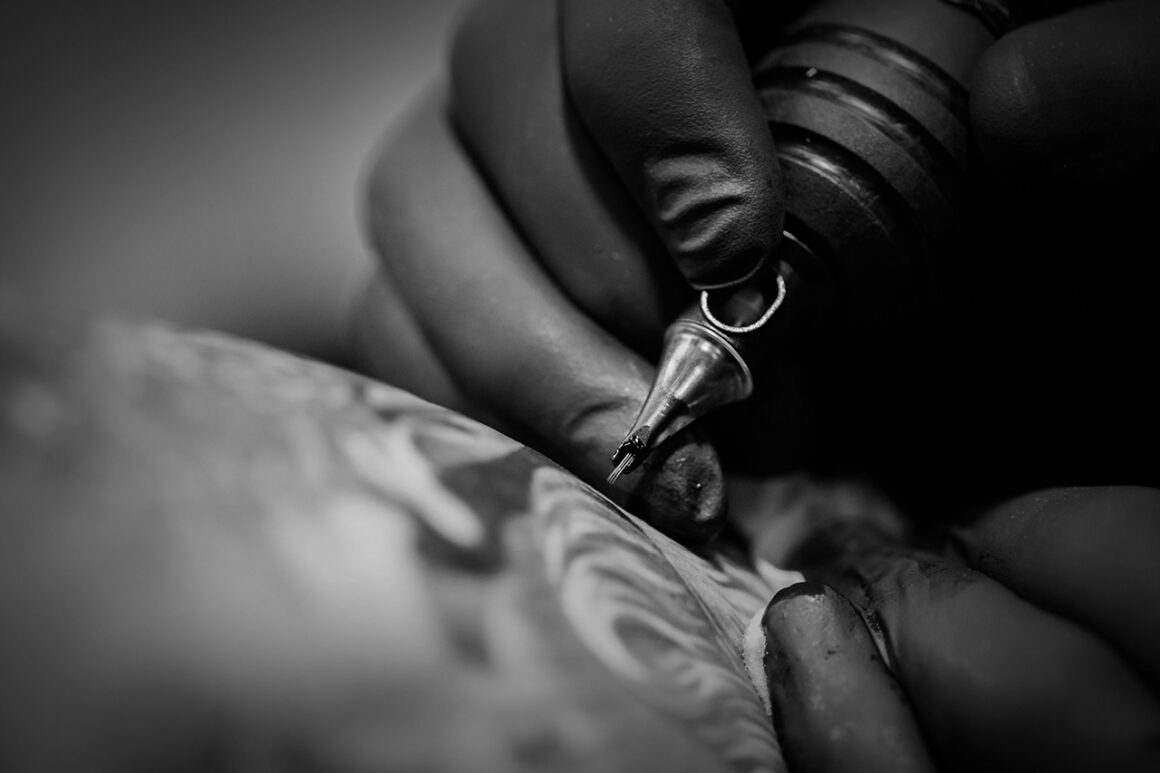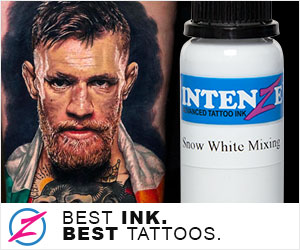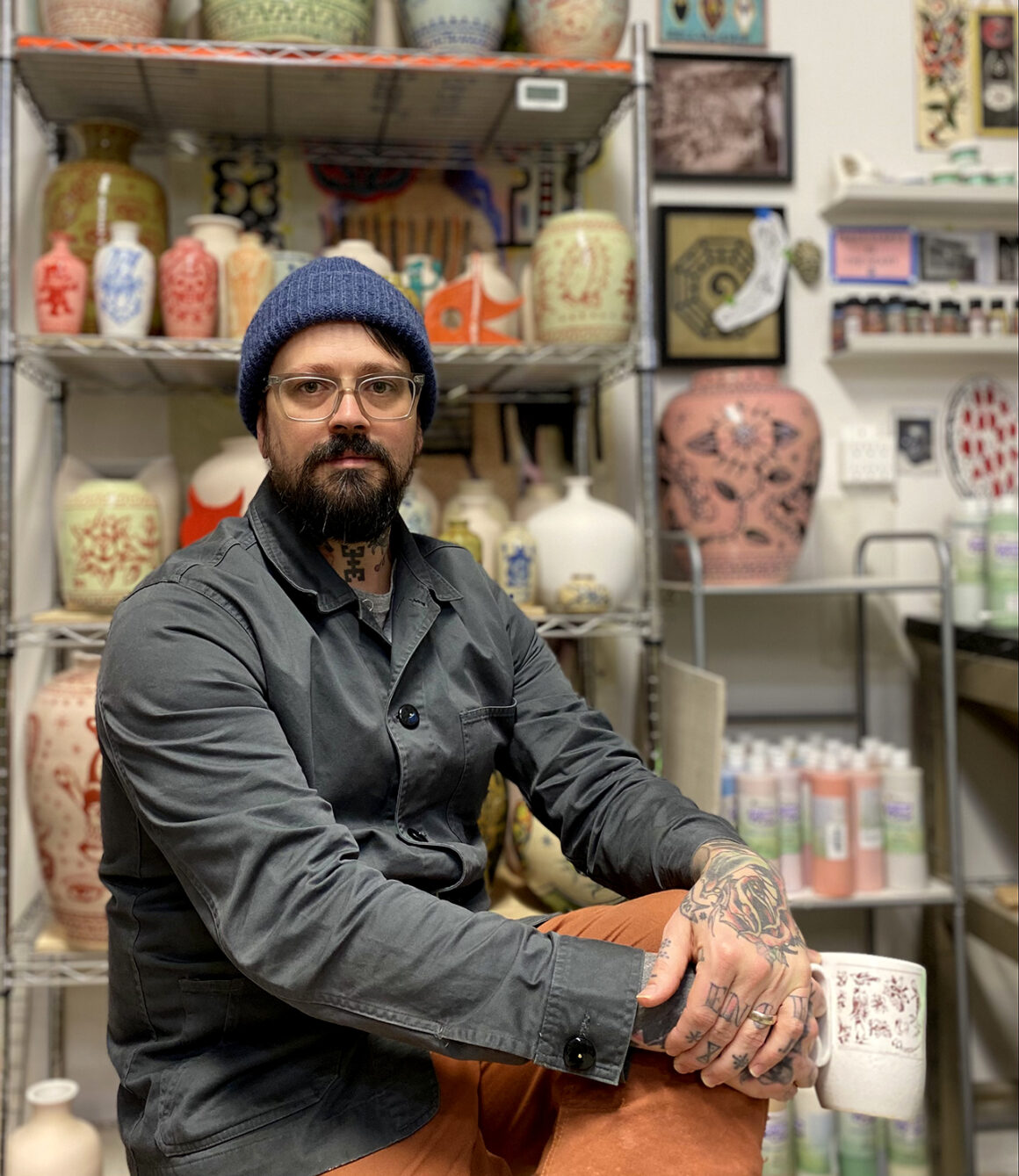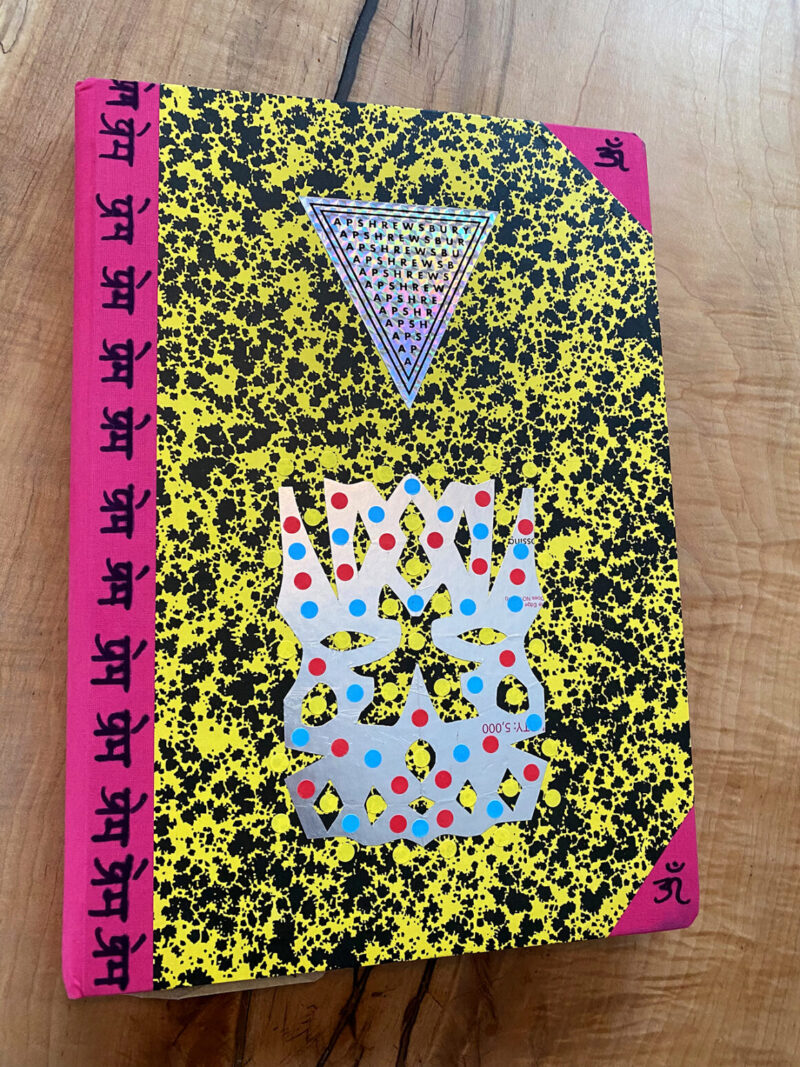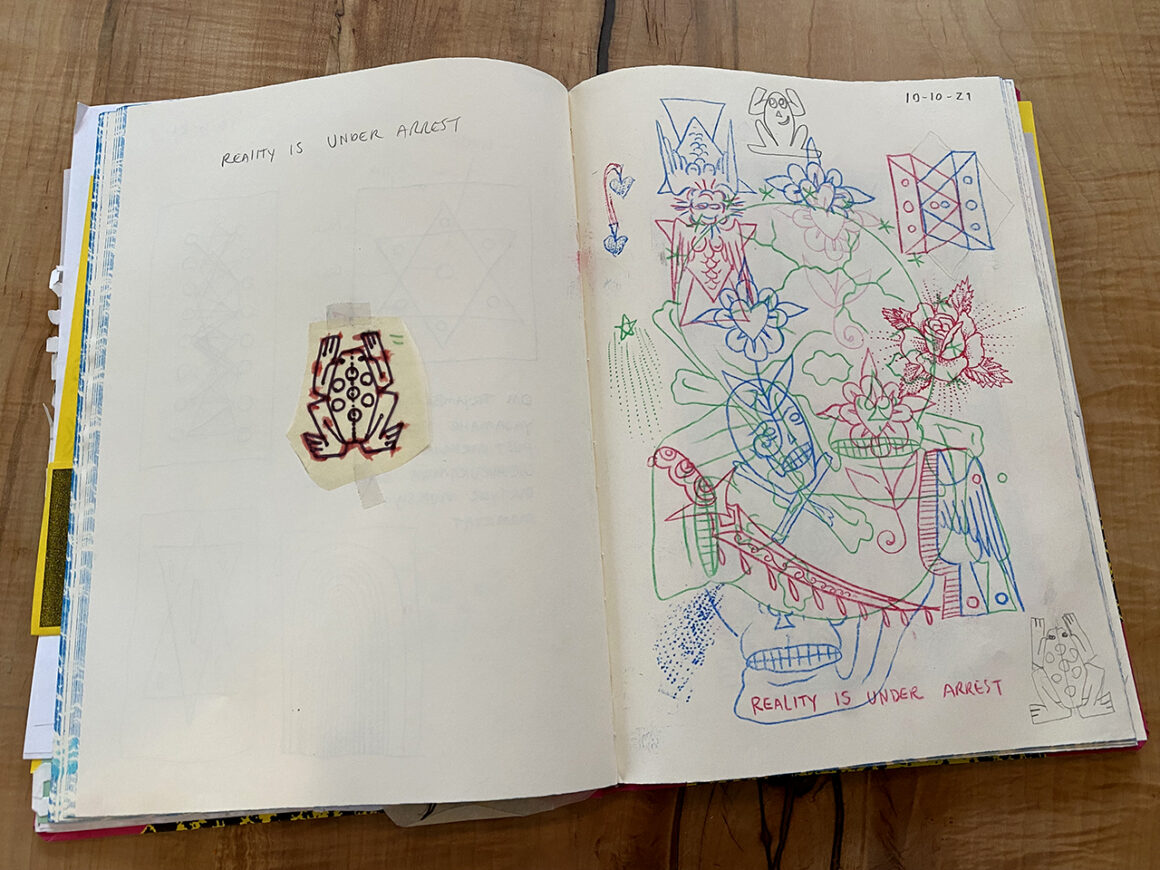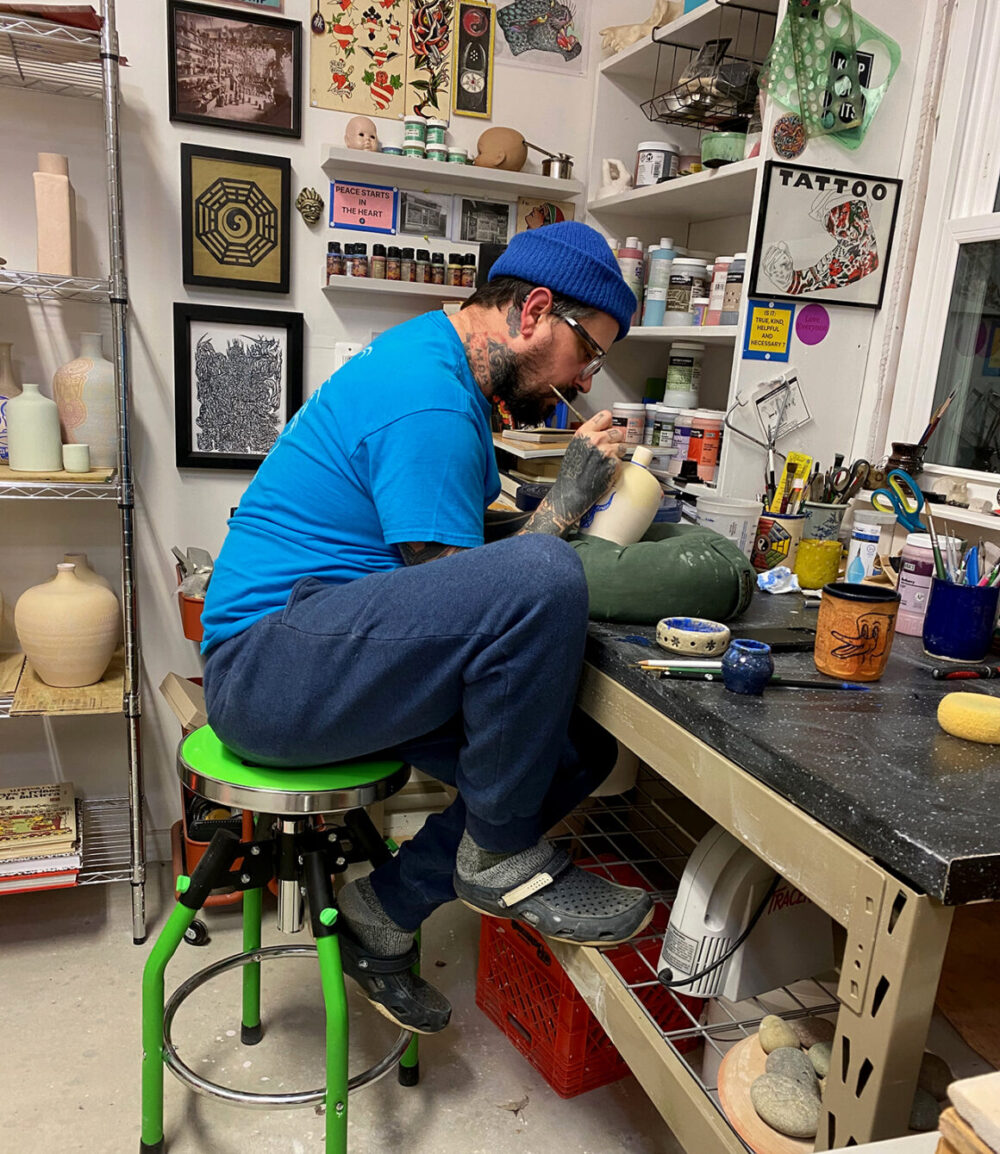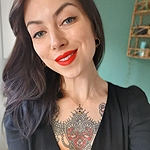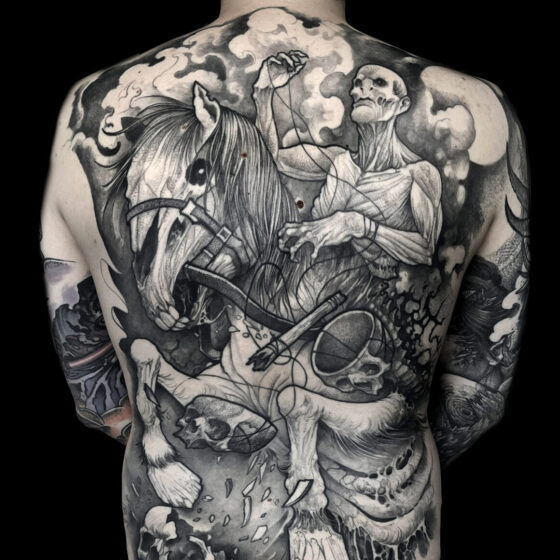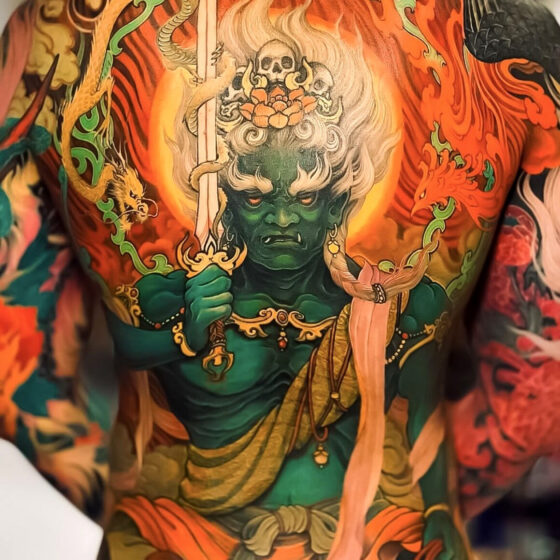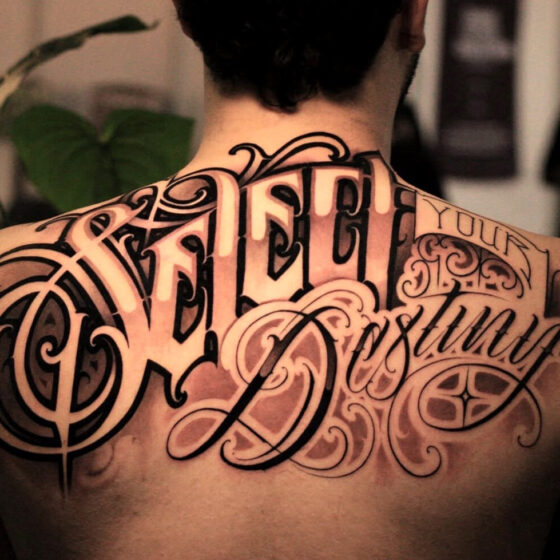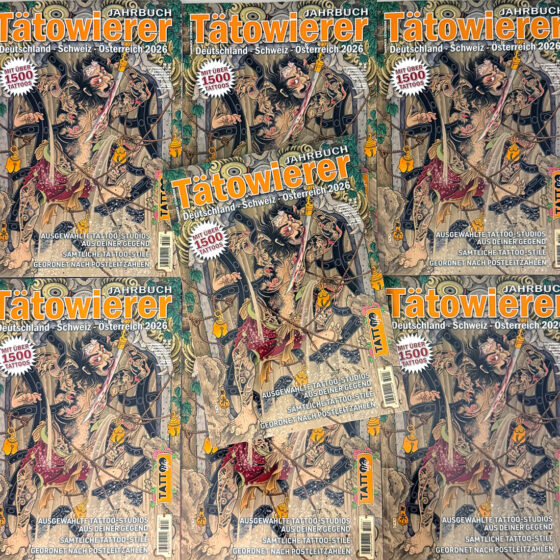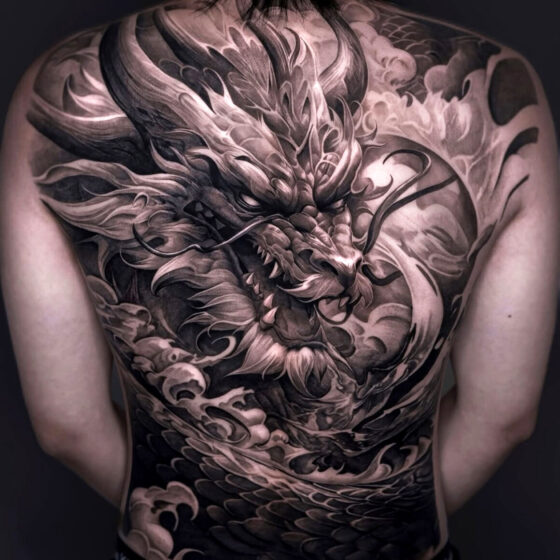As a former tattooer with a passion for the visual language of the craft, Adam Shrewsbury has since transferred his skills to the potter’s wheel. We were honoured to catch up with Adam and delve deeper into his working process and thoughts about tattooing and ceramics.
First of all, let’s introduce you; what do you do?
The simple answer is that I’m an artist with a focus in ceramics. The deeper answer is that I bring as much presence as possible to all that I do, to let my life be a meditation. Sometimes it looks like making pottery and sometimes it looks like cooking soup. Creativity as a way of life.
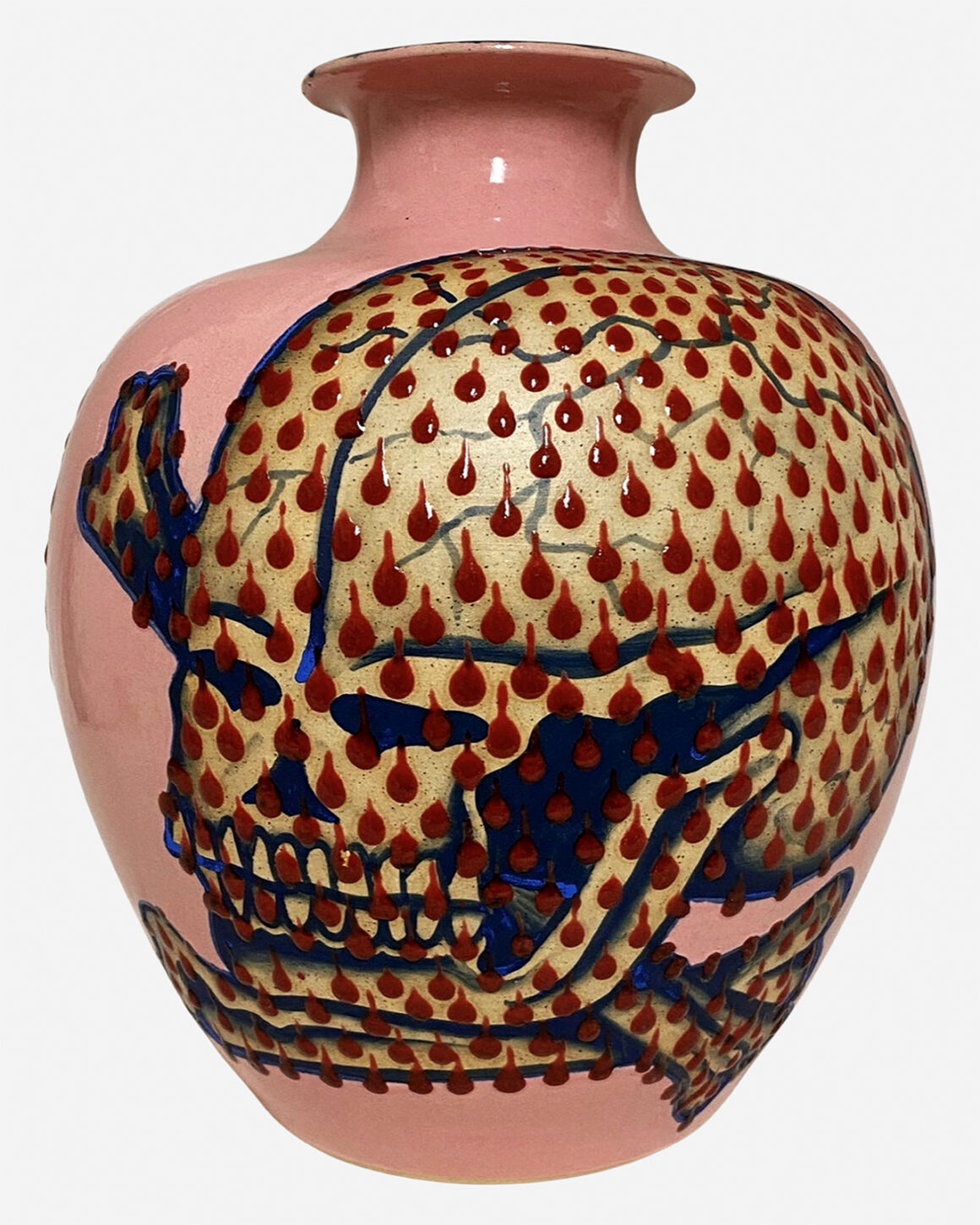
Although you’re now focusing on other artistic endeavours, you have a background in tattooing and this permeates your work. What makes the visual language of tattooing special to you?
Since I first found tattooing as a small child I have been fascinated. One of my early memories is seeing a pinup on the forearm of a biker, a tall, surly character that went by the name Rabbit, he was a friend of my parents. I remember asking him about it and he told me how it was “sewed” in. This stumped me for years, eventually I realised it was hand-poked. Rough, uneven and blueish grey in colour, the nude figure was wrapped around a large sword, like it was a stripper pole.
The language of tattooing is special. It’s unlike any other symbolic lexicon.
There may be parallel symbols and overlapping meanings with other image libraries, but in the traditional style of tattooing that I know, we have a set of images that when used well, can convey very complex and profound ideas with just a few lines.
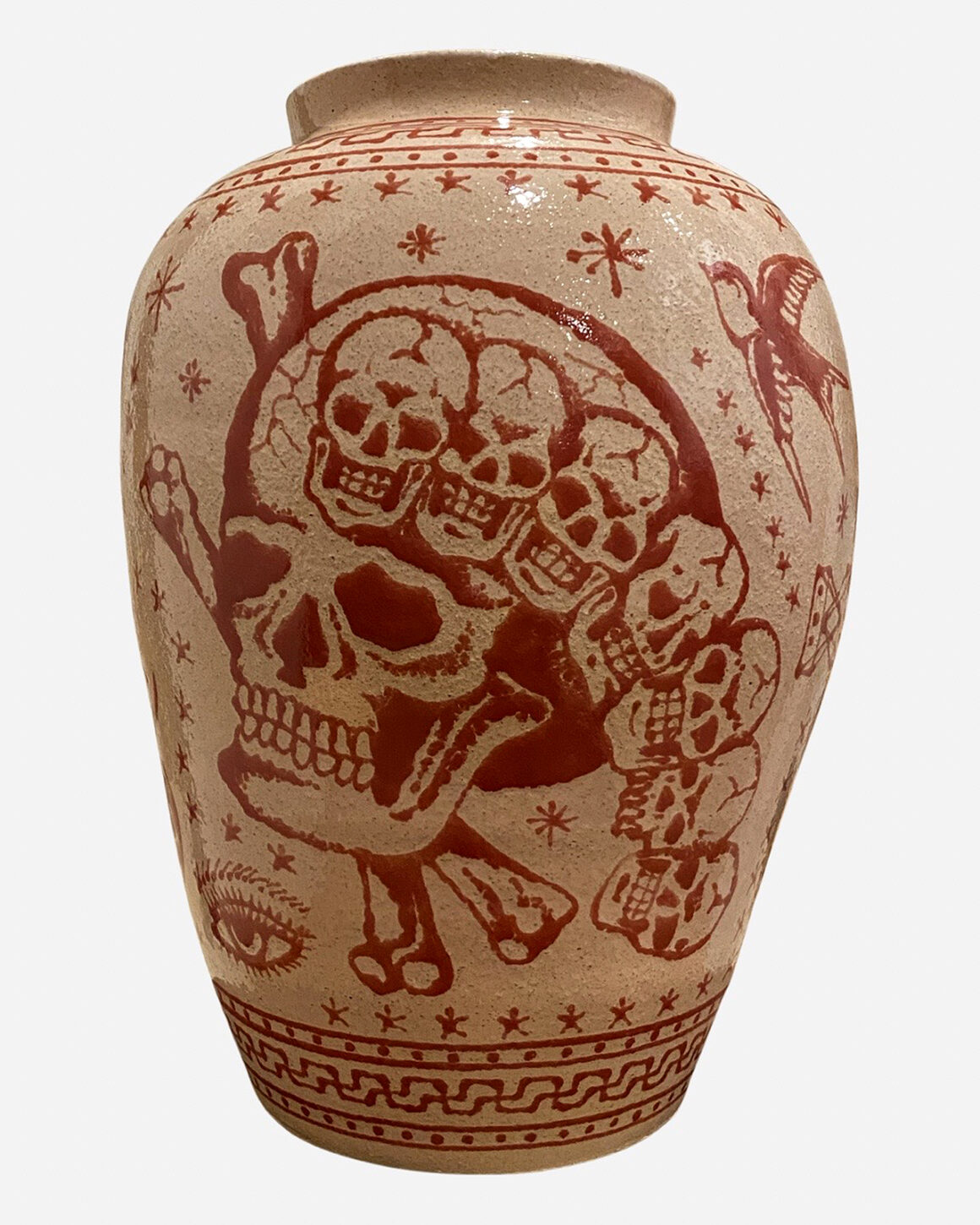
In early American style tattooing the most powerful human experiences have been codified into a basic symbol set. The attraction to me is that they are universal. Who has not been in love? Who has not been hurt or cheated? Seen the birth of a child? Who has not had loved ones die? Who has not cheered their team? Who has not experienced truth? The list could go on.
If we take a big idea – death – the mystery of it, the finality of it, and we distill it into the most potent symbol, we get the skull. Everyone has a skull, everyone knows what it means. Memento Mori, remember your death.
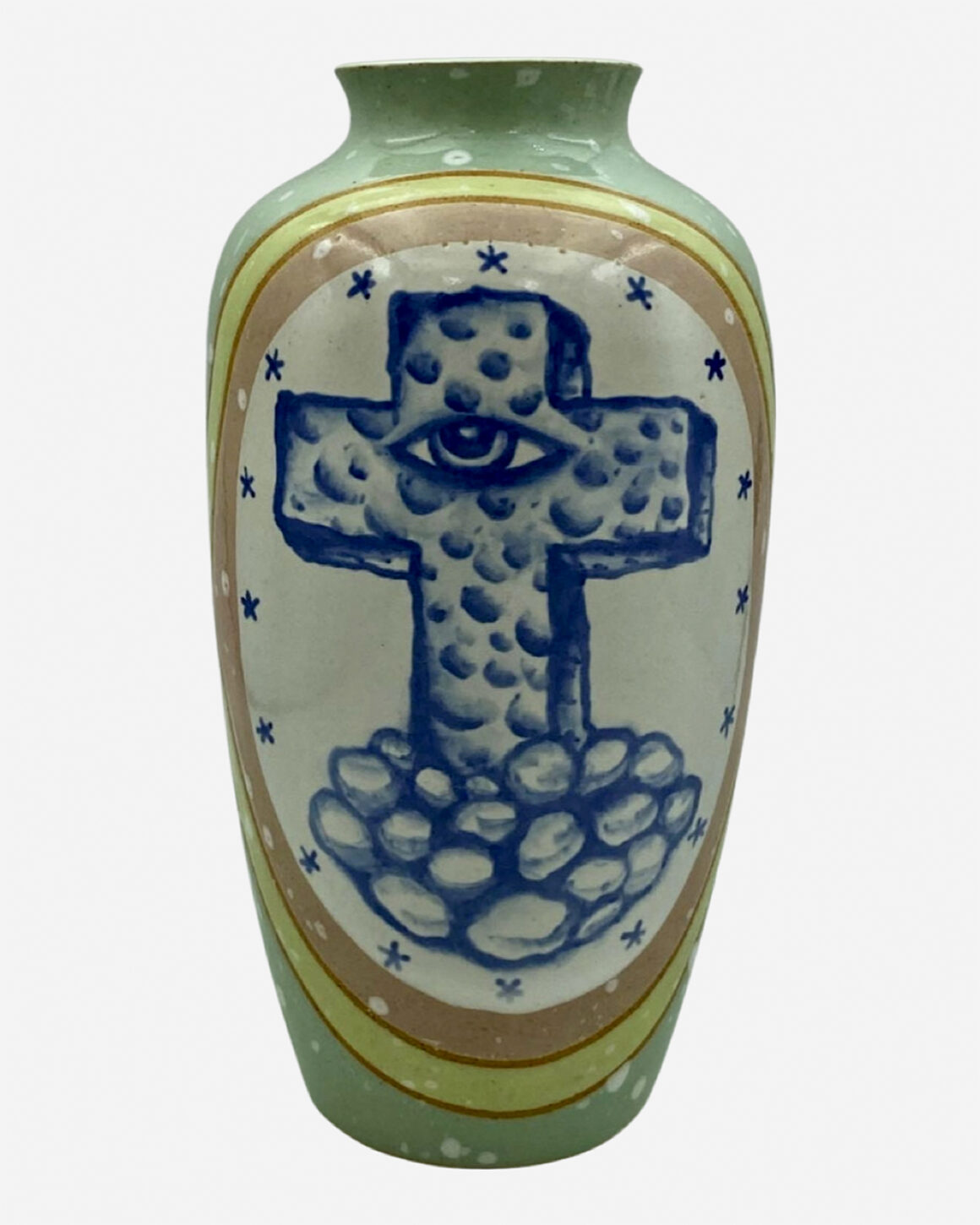
Nick Bubash said to me “we inherit this symbolic vocabulary and what we say with it is what makes it ours”. Anyone can learn the alphabet, but what they write, or how they write is up to them.
So I take these images, and I use them as a way of reflecting; who am I? What is exciting to me?
My intention is to make objects that are interesting to look at and that can act as signs pointing beyond to the wonder-full mystery of life.
Objects to spark curiosity in viewers and perhaps inspire them to tap into their own creative potential.
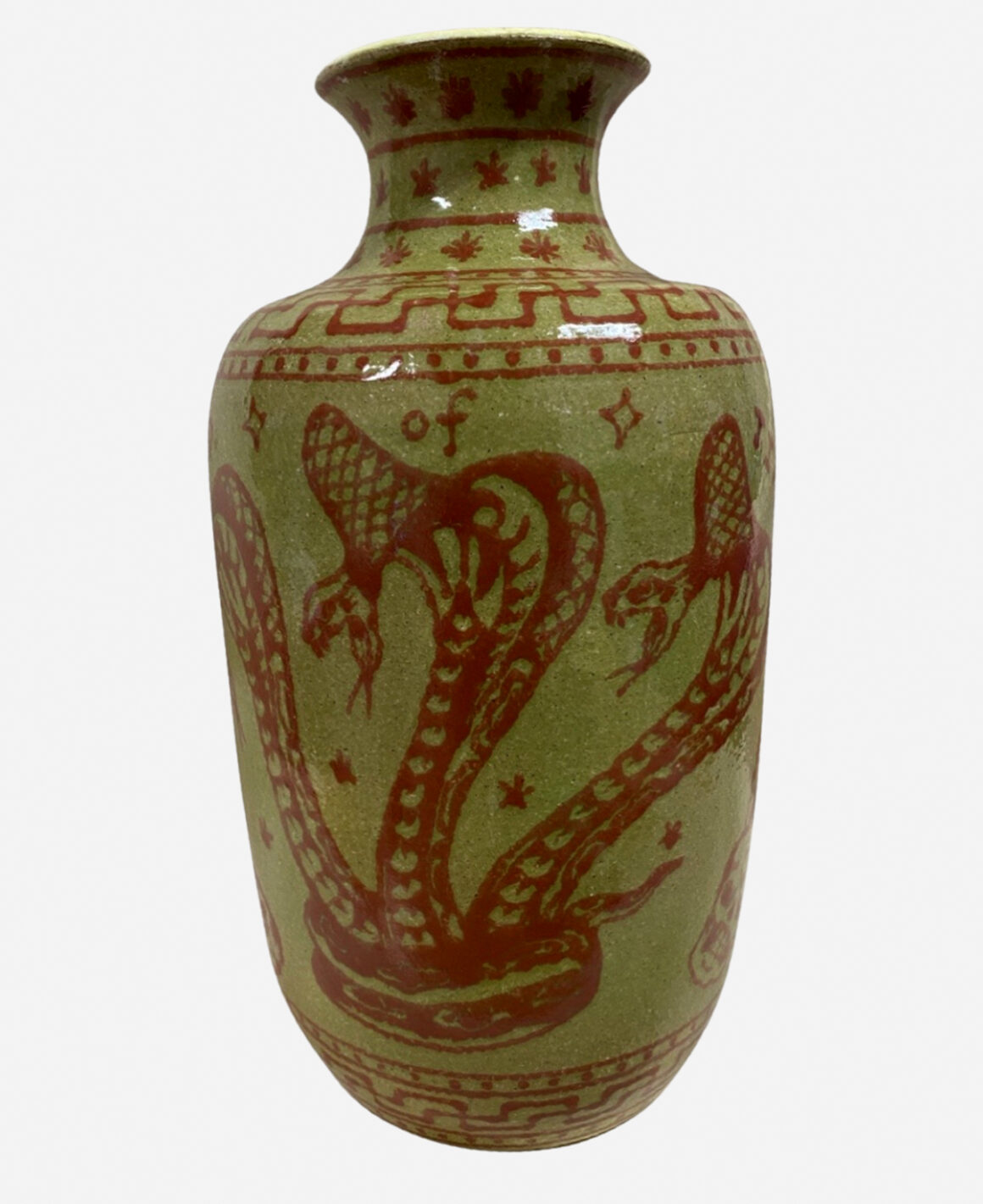
Quite a few tattooers have taken to the pottery wheel in recent years. How did you discover a passion for ceramics? Do you feel that the two crafts share any creative links?
My wife booked our first pottery class as a fun thing for us to do in 2016. It was a revelation the moment the teacher handed my first piece to me from the kiln, because until then I had no idea I was a potter, but when I touched it I knew fully that I was and would be for the rest of my life. I knew that my whole life had been leading me to the clay, in the same way I knew I would tattoo a few lines into getting my first one.
Having known the work of Ed Hardy for years I was aware that he had painted tattoo imagery on ceramics, and earlier this year I had the honour of a studio visit with him. He encouraged me to continue exploring this direction of mixing tattoo and ceramic, so I am trying my best to do that.
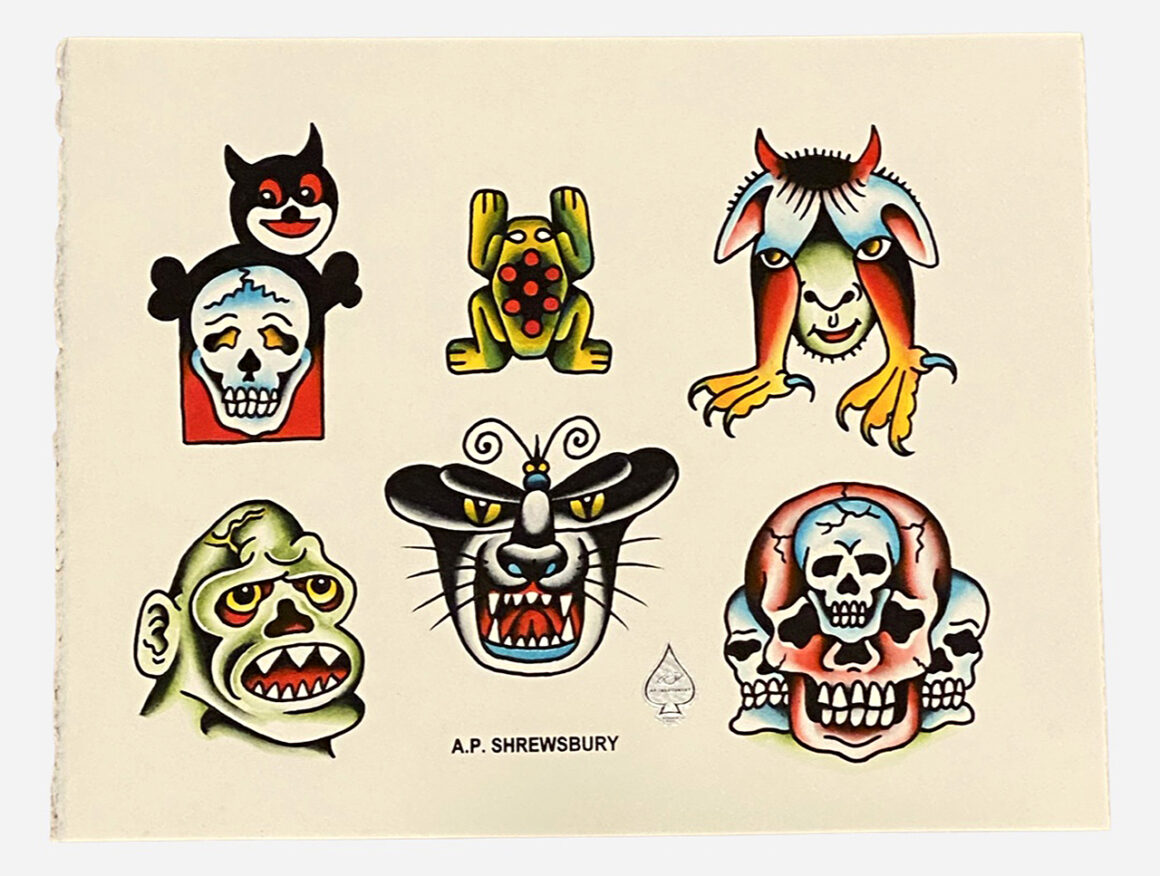
I think that ceramics and tattooing also have historical links. Leo Zulueta pointed out to me that many of the early Borneo tribal designs were taken from the surface decorations of ancient Chinese ceramics and bronze urns that made their way to Indonesia via trade routes. Also, the earliest human-made artefacts we have are ceramic shards, and the oldest human remains ever discovered have tattoos.
Perhaps only a coincidence, I can’t say. I think there is more research to be done.
Beyond the scant historical connections, the process of making ceramics and tattooing has parallels.
While tattooing, you sit, hunched over focusing intently on what you are doing for extended periods, your hand eye coordination must be sharp. At the same time you are listening to/feeling the client and responding to their needs.
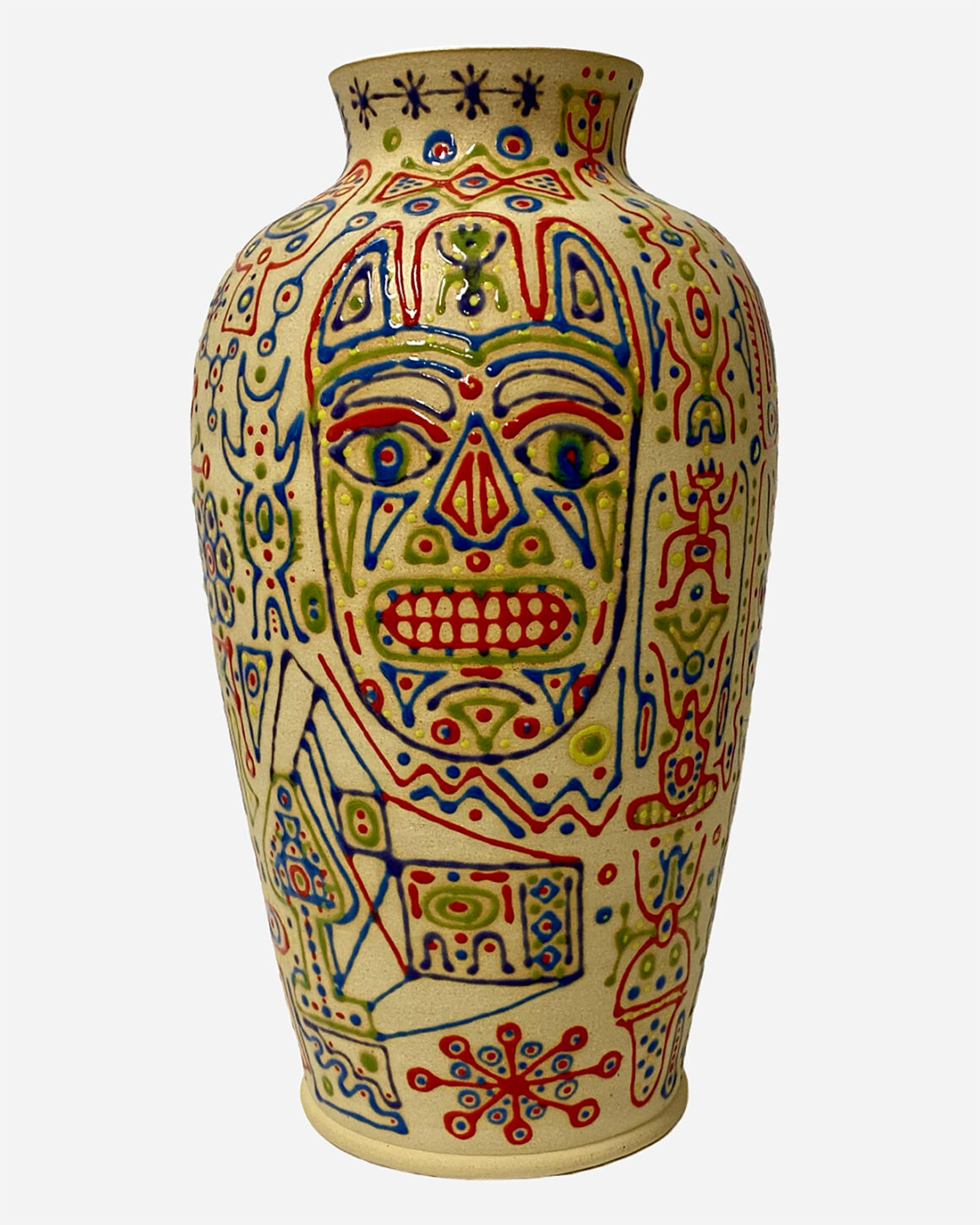
While at the potters wheel you are focused in much the same way, only now you listen to the clay. You feel it in your hands and fingertips, you are feeling how far you can push it, is it too wet or dry, perhaps I should ease my foot off of the pedal and step back and see what is going on here.
Then later, the surface decoration. What kind of marks will it have? Do the images on the surface harmonise with each other, or do they contrast? Does the surface design go with the form and flow of the vessel? The ability of someone who has tattooed to work on a curved surface is second nature, as is the skill to lead the eye of the viewer around the surface in an interesting way.
Finally the piece comes out of the glaze firing. You did your best at each step, however what comes out of the kiln is not what went in.
It has changed from what you did into what it is.
The grey turned green, the pink became blue, the drawings spread out a little and the whole thing got smaller. In the same way tattoos heal and age, you do your best, but what comes back through that door, a month or ten years from now is not up to you. It may look better or worse than anticipated. Did it settle in nicely or fade away? We do our best with the tools that we have and trust that things will work out as they should. It is all we can do.
Aside from tattoo imagery, what inspires your work?
I am curious and enjoy a challenge. In pottery there is so much to study with the form alone that it could take decades to explore.
For surface decoration, I may look through a book and see a reproduction of a painting and some shape will catch my eye, maybe it is familiar and somehow mysterious and this may push me towards sketching that form, trying to capture some of what I feel when I look at it.
I give myself problems to solve. How can I make something that at first glance you feel certain that you know exactly what it is, but the more you look at it, the more you realise that you don’t know what it is at all? My aim is to make objects that draw viewers into a relationship with the mystery of being.
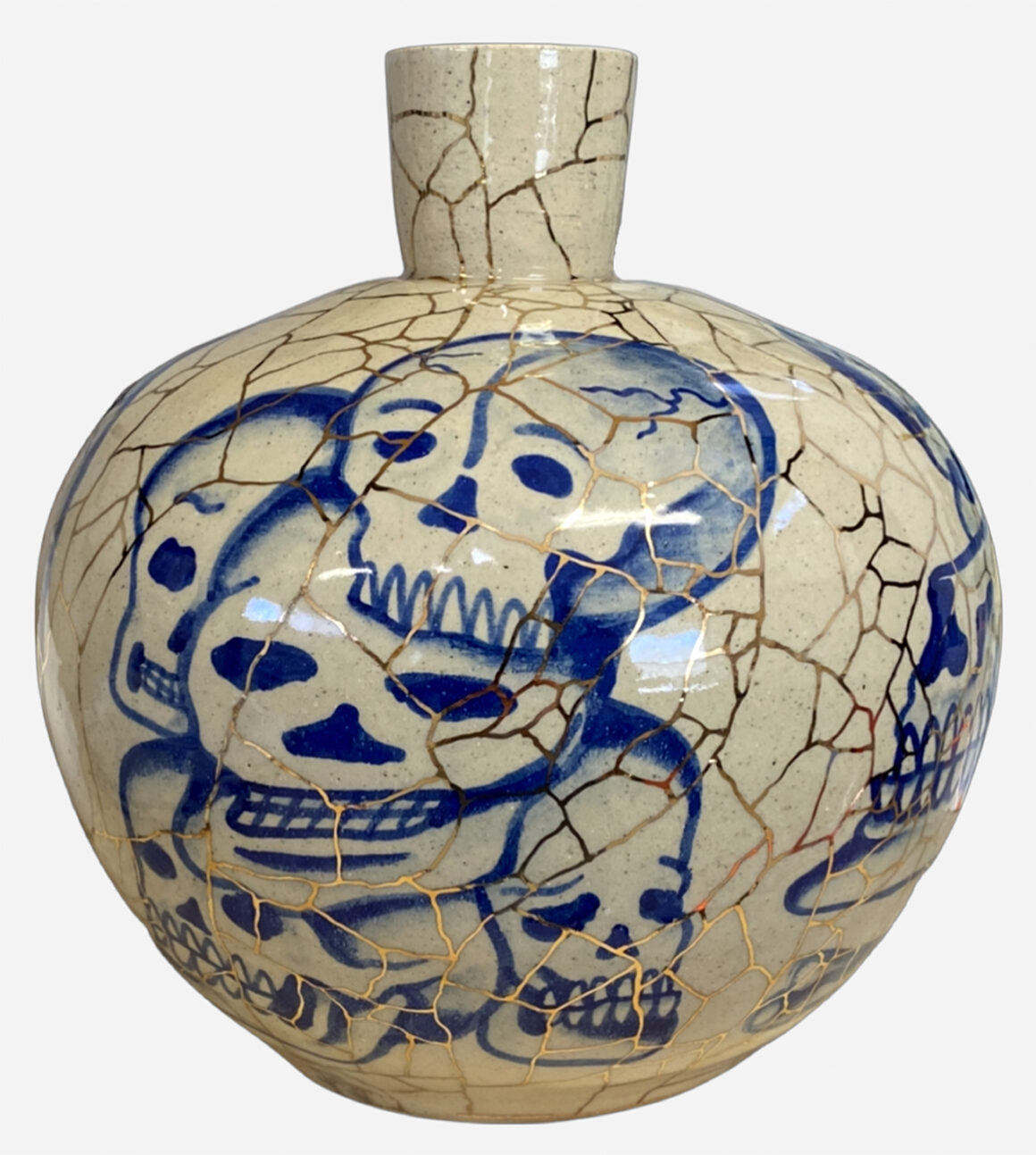
Moments of inspiration come in many forms, faded colours on a package, the rim on a greek vase, a lyric that resonates, a shadow falling across a room, the colour of a sunset. The death of a dear friend.
If we get caught in thinking about doing, rather than doing, then nothing will get done. “Don’t think, just paint” is a phrase I return to often.
The important thing is to make the work, sometimes I feel inspired other times not. Either way I get in the studio and work. Like sometimes dinner is being cooked and you think you’re not hungry, then after that first bite you realise you were ravenous. When you start the process, perhaps you’ll find the inspiration that you didn’t know you were hungry for.
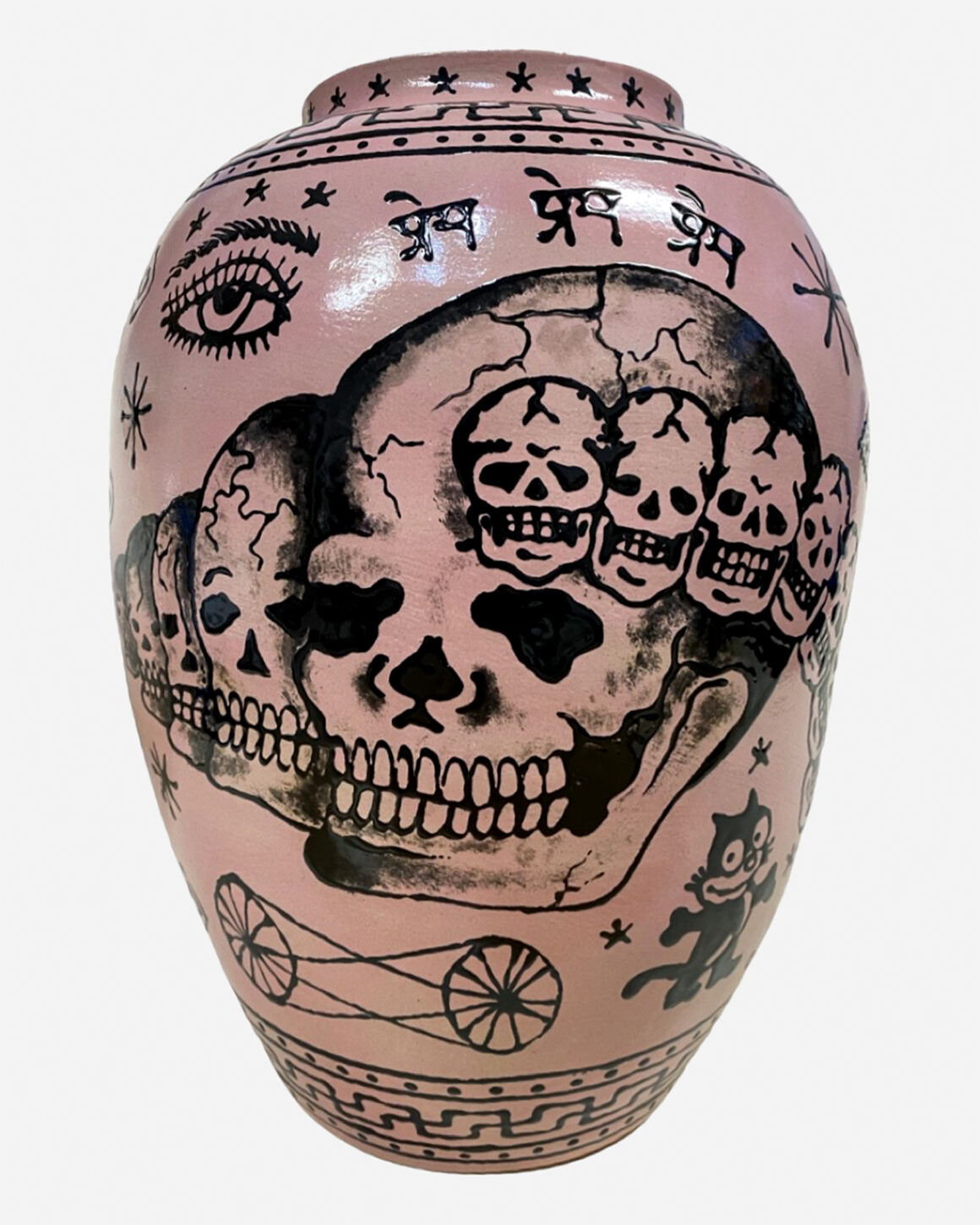
Which artists do you admire?
Last year I made a list of every artist I could think of who had inspired or influenced me. I got up around 200 names before I hit a wall but it was an enjoyable exercise nonetheless!
Some that come to mind in this moment, in no particular order: Michael Frimkess, Magdalena Frimkess, Nina Chanel Abney, Philip Guston, Ed Hardy, Thom DeVita, Nick Cave, Alejandro Jodorowsky, Chris Roberts-Antieau, Charles Burns, Daniel Higgs, Bert Grimm, Tal-R, Louise Bourgeois, Robbie Basho, Manuel Ocampo, Frida Kahlo, David Hockney, Harry Smith, Paulus Berensohn, Flannery O’Conner, Misaki Kawai, David Lynch.
Besides crafting ceramics, do you work in any other mediums?
I discovered with ceramics that my previous experience with other mediums always comes into play.
I don’t like to limit myself, so I make flash paintings in watercolour, draw with crayons or markers, make ink blots and oil transfer drawings among other things.
I do anything that is exciting to me, I play as much as possible, because I feel that all of creativity is connected, and I may stumble onto some technique that doesn’t work so well in one medium but when I transfer it to clay it works beautifully and something new and interesting occurs. The joy of discovery is unparalleled and a sense of adventure helps. I never let how something was intended to be used become an obstacle to using it in a way that suits my purpose.
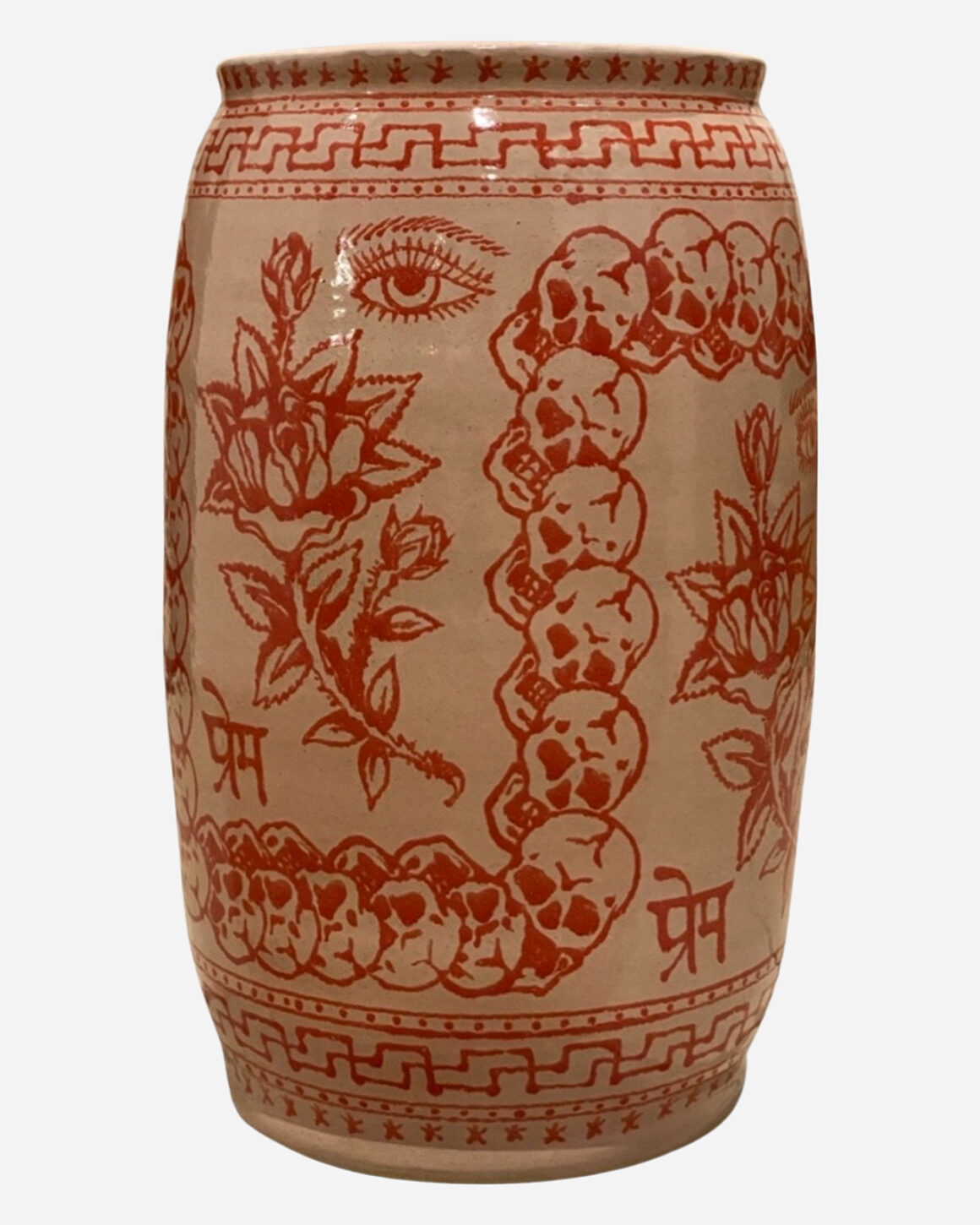
In creativity, failure is my friend. Each time I try something and it doesn’t work, the path of realising my goal becomes a little clearer and I try again. This way I am always learning and sometimes I stumble onto something completely new. From there I take what is working and enlarge it. Next take two things that are working well and mix them together, then hold on to your hat because you have just entered the realm of magic… So failure is not negative, in fact the path to success is paved with it.
How does a pot come together from start to finish? What’s your workspace like?
With pottery each step is unique and distinct. I will have a form in mind when I start throwing on the wheel, and the scale of the work is dictated by how much clay I am using and my skills. Sometimes I have an example piece I am studying, like an antique bottle or a miniature Chinese ceramic vase and I’ll keep this above the wheel.
Making the work has many steps, from wedging to throwing and trimming, decorating and glazing. I focus on doing each stage well, rather than having a fully mapped idea in mind. Properly wedged clay is easier to centre, well centred clay is easier to throw, etc.
I usually throw for a few weeks, bisque fire, decorate for a few weeks and have a glaze firing. Unlike tattooing, the quickest an idea can be realised is generally 2-3 weeks, but often much longer. The clay dictates the speed at which I work.
The surface decoration is different from every other stage, more akin to painting, responding to what moves me in the moment.
I have a goal of what I would like to do, but this only gives me a direction. The result is a surprise (don’t get me started on ‘kiln gods’) and ask any potter, opening the glaze kiln always feels like Christmas morning.
The workspace is a mess while I am working. Clay everywhere when I am throwing and trimming, books and papers and glazes spread around when decorating and always incense burning.
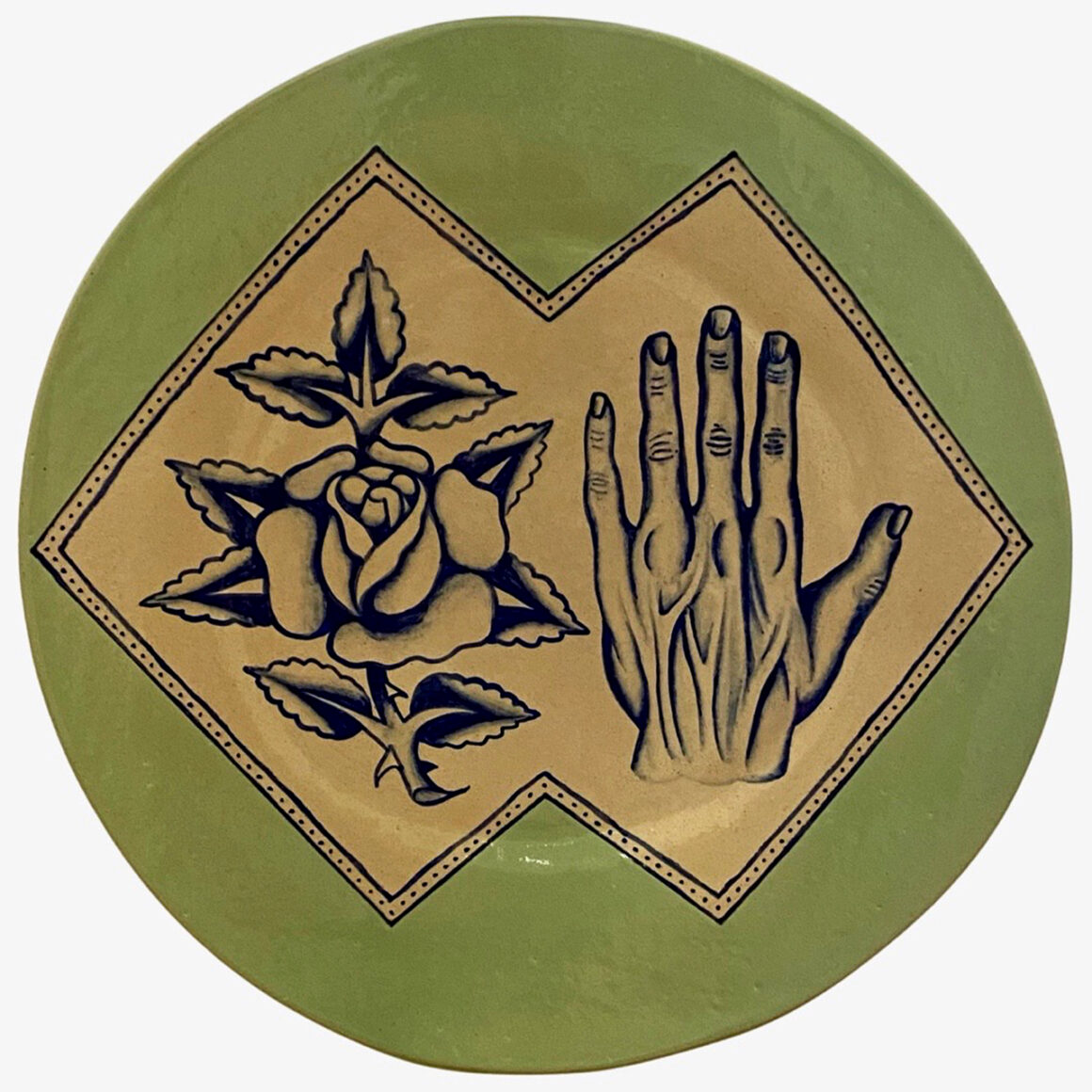
When it’s finished, I bring the work in the house and live with it for a while, considering it in different lights and situations, studying it to see how I feel about it and how I may improve the next time. Other times it moves quickly, packed while still warm. I am grateful to collectors, however it’s hard to walk into an empty studio and get started all over again. I am now trying to let the work go more slowly so I can maintain a sense of creative continuity.
Do you have any new projects you can share with us?
Right now I am creating a body of work that will be shown in March ’22 with Hey There Projects in Joshua Tree, CA. I am pushing myself to make larger forms, paying attention to colour relationships in the glaze and playing with repetition of images and symbols, a cascade of skulls overlapping, a halo of mantra encircling a hand and so on. I use the repetition of imagery and breath to stay grounded in the present, the now.
Each moment is unique, and yet somehow the same. Each day has its cycle, no two days exactly alike, yet there goes another one and here we are.
I like the idea that there’s only one, of whatever it is. In essence every vase is the only vase, it has an inside and outside, a foot and shoulder and each one is the archetype for every other vase. The same goes with a skull, a leaf or anything else. For example every single eye that has been known to exist operates in much the same way as every other eye, light hits the retina which changes the light into electrical signals that travel to the brain and become the images we perceive. There are a vast number of eyes but there is only one eye. It’s a bizarre and fascinating idea to me. This is a concept I am playing with in this current series.
